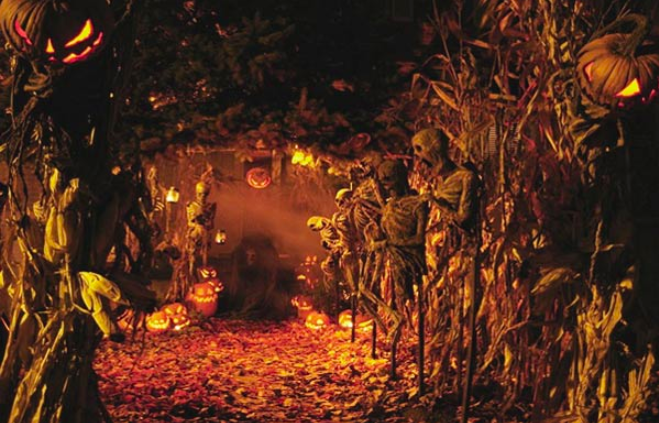The Origins of Halloween
Image Courtesy of www.ancient-origins.net
Halloween began as the Celtic holiday of Samhain
October 16, 2019
October is breezing by quickly, and as the leaves fall, we draw ever closer to the day of pumpkins and candy. Halloween has become such a huge part of our culture all across our nation. We will even be celebrating at Oratory with the costume contest. Everyone celebrates in some way: you may dress up and go out to get some free candy, or you may carve up your pumpkin and man the house. However, did you know that Halloween actually has a pretty spooky origin story dating back almost 2,000 years?
To begin, we must travel back to the time of the Celts. The Celtic people lived in what is now Ireland and the United Kingdom. In the fall, they celebrated their New Year on November 1st, as this for them symbolized the end of the harvest season and into the season of deadly winter. On the day just before the Celtic New Year, that is October 31st, they celebrated another holiday, known as Samhain. The Celts believed that on this day the worlds of the living and the dead would merge, and as such, monsters and fairies could come out. Are you beginning to see the similarity? Samhain was also a time that the Celts burned many bonfires, to protect them from the coming winter. Not only did they believe in monsters, the Celts often dressed up as animals so that they may tell each other’s fortunes or so that the ghosts of their ancestors would not come to kidnap them. The Celts believed in some pretty freaky monsters, such as the Dullahan, a headless man riding on a horse with flame eyes who would signify death to anyone who might encounter him. It is obvious that this holiday has many aspects of Halloween within it, but how did Halloween then evolve from Samhain?
By the time the A.D. years came around, the Romans had conquered much of Celtic territory. Not only that but in the 300s A.D., the Roman Empire converted to Catholicism. Rome did eventually fall, ushering in the Middle Ages, but not before most of the Celts were exposed to Catholicism. This group of pagans began to convert, but they still did not get rid of their pagan practices. In the 600s A.D., Pope Boniface IV had had enough of the pagan holidays, and so did his best to Christianize them, Samhain included. He dedicated a feast day in May to celebrate all of the martyrs, and Pope Gregory III later moved this day to November 1st, where it became known as All Saints Day. The Church then, in about 1000 A.D., established November 2nd to be All Souls Day, most likely to supplant the Celtic holiday by making a similar one. All Saints Day came to be known as All-Hallows, and Samhain, the day right before it, All-Hallows-Eve.
Halloween was not truly popular in the mostly Protestant early-America. Really, it did not rise to its true position as we see it today until the 1800s, when thousands of Irish immigrants journeyed to America, bringing their traditions with them. Scattering across the nation, these Irish immigrants brought their Celtic origins into America and popularized the celebration of Halloween nationwide.
You may have thought to yourself once that Halloween has some pretty strange traditions, like cutting pumpkins and dressing up, but now I hope you understand how these traditions came about. They came from an incredibly superstitious group, who have since passed their practices down thousands of years, all the way to today. That, I think, is truly incredible, and speaks to the power that traditions hold over all of us no matter who you are or where you come from.

